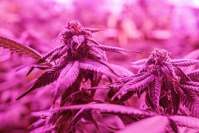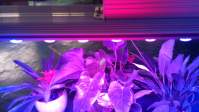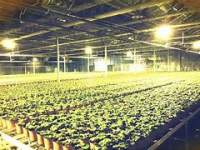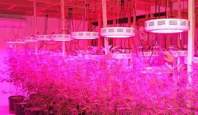How many LED plant lights do you need to buy? This is a problem that many novice growers may encounter when they start planting. Because there are many influencing factors, there are two main factors: the size of the planting space and the degree of light-loving of the plants.
Understand the light required by your plants and how many 1000w LED plant lights are needed. You will need to consider two important factors-the size of the planting space and the degree of light liking for the plants.
The size of the planting space is the key to deciding how many 1000w LED plant lights can be installed. If a large area is planted, more 1000w LED plant lights are definitely needed to meet the requirements. The maximum installation requires measuring the planting space area. Multiply the length by the width to get the square meters of the planting area. You can make the right choice based on how much power to provide per square meter, that is, how many 1000w LED plant lights are installed per square meter. In this way, each lamp can be evenly distributed, so that the outer edge will receive strong light, so that the light will be more uniform, and the growth of plants will be more effective.
The arrangement of the spacing between each LED plant light is mainly determined according to the light intensity, in addition to the installation height, the distance distribution between each LED plant light is obtained after comprehensive calculation, so as to ensure the uniformity of the large area of plant planting light. .
The light-loving degree of plants determines how many 1000w LED plant lights are needed to supplement light. If you are planting more light-loving plants, such as cannabis crops, you need to install multiple 1000w LED plant lights to supplement light, not only to ensure the uniformity of light, but also To ensure sufficient light intensity, when multiple 1000w LED plant lights are used for supplement light, part of the light can be overlapped, and the light coverage rate is stronger.
Short-illuminated plants: refers to plants that bloom when the light period is less than a certain value according to the regular light period. Short-light time can meet the growth needs of such plants. If they are planted outdoors, LED plant lights are generally not needed.
Common short-light plants are: soybean, morning glory, chrysanthemum, tobacco and so on.
Intermediate lighting plants: This type of plants does not require very strict lighting time, but the use of LED plant lights can appropriately shorten their growth cycle. Such plants can be matched with LED plant lights to supplement the light, which will increase the yield and market in advance.
Common intermediate plants are: cucumber, dandelion, string beans, tomato and so on.
Long-light plants: refers to plants that require a longer light time, that is, light-loving plants. The light time must reach the light that meets the light cycle of the plant before the plant will bloom and set fruit, otherwise it will only grow normally and will not bring a better harvest. Insufficient light time will have a serious impact, and it is also the plants that need to be aligned with LED grow lights to fill light.
Common long-day plants are: impatiens, wheat, spinach, radish and so on.
To use 1000wLED plant light to fill light, you need to know the light time required by various plants, understand the light required by the photoperiod of the plant, and make adjustments to the growth of the plant.
If you do not provide enough light for the plants, they will be difficult to grow. This can lead to poor plant growth and poor results. Not to mention, you can't get the effect you want from it.
Need to pay attention to when using 1000wLED plant light
Will LED plant lights heat up? No electronic product can avoid generating heat. Compared with HID lamp, 1000wLED plant growth lamp itself does not generate heat in the form of infrared radiation, but the lamp itself generates heat. The greater the power, the more heat is generated.
How to reduce the heat of 1000wLED plant light
There are two main ways: active cooling and passive cooling.
Active cooling: The most common way is to install a fan. When there is not enough air flow, you may need to consider installing a fan around the 1000w LED plant light to get more air flow to create a cool environment.
Passive cooling: Passive is its own heat dissipation. That is, the 1000wLED plant light itself uses high thermal conductivity materials and shell heat dissipation design.
Security Question
The blue light of 1000wLED plant lights is the same as other electronic products, which is harmful to human eyes. This aspect needs to be paid attention to. Therefore, it is necessary to wear anti-blue goggles to protect the eyes.
The harm of blue light:
1. Blue light will aggravate the disease in the macular area of the retina;
2. Blue light can cause damage to the fundus after cataract surgery;
3. Blue light can cause blurred vision and cause visual fatigue;
4. Blue light can cause glare;
5. Blue light can inhibit the secretion of melatonin and disturb sleep.
1000wLED plant light supplement light skills:
1. Illumination distance
The lighting distance of LED plant lights is very important. You should adjust the points for different plants at different stages, and you must also unify the distance to make the light even more uniform. If the distance is not well controlled, it may harm the growth of plants. The general recommendation is that the germination stage distance: 60 cm, the seedling stage distance: 75 cm, the growth stage distance: 45 cm, and the flowering stage distance: 30 cm.
2. Lighting time
The lighting time of LED plant lights is mainly determined according to plants, which are divided into two types, positive plants and negative plants. Positive plants are more light-loving, and the lighting time can be longer when supplementing the light, usually 18/6 (on/off) or 20/4 (on/off). For negative plants, the lighting time is normal, usually 12/12 (on/off).
3. Dimming level
The dimming of LED plant lights can make plants grow better at each stage, the general germination rate: 30%; seedlings: 50%-75%; growth: 75%-100%; flowering: 100%. Give plants the best growth status.
If you don’t know how many 1000w LED plant lights you need, you can calculate and choose according to the size of the planting space and the degree of light liking of the plants, or you can ask our Yaorong Technology and technical personnel to plan for you in detail. Yaorong Technology is specialized in high-end LEDs. Plant lamp companies can independently develop and customize the spectra required for the growth of a variety of plants. The styles of LED plant lights are also relatively new. From the beginning of 2010 to the present, the eleven years of precipitation is sufficient to ensure the quality of the products.






